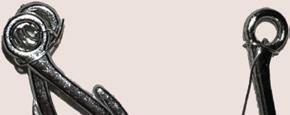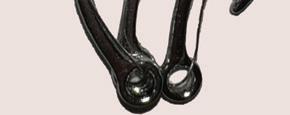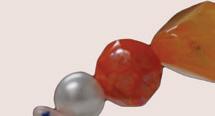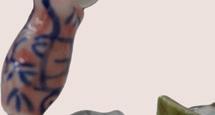






































































Nowness - noun : the quality or state of existing or occurring in/ belonging to the present time.
Where environmental concerns are at the forefront of everyone’s preoccupation, the intersection between art and sustainability has never been more crucial. Through this issue 5 of the Visual Opinion, we aim to explore how SVA artists are presently incorporating sustainable practices into their work, and how they are using their creativity to shed light on environmental challenges.
In this issue, you will find a diverse range of opinions, perspectives and insights from SVA students, along with an exclusive interview featuring George Boorujy, artist and Fine Art faculty member. With art being a driving force for a positive change, we hope this can start meaningful conversations.
- Olympe Gautier
** You may notice that pages of this issue are perforated. We encourage you to take out pages you like and hang them on your walls, or repurpose them for whatever you would like!
Editor in Chief
Olympe Gautier
Managing Editor Angel Ye
Design Editor Lela Fand
Editor in Chief Intern Nandinie Andlay
Managing Editor Intern Clarisse Lo
Design Editor Intern
Nicole Hsu
Staff Advisor
Maria Rovira-McCune

Yutong Hu: Cover Type, George Boorujy Interview: 4, Laura Trujillo Salazar: 8, Jianshen Wu: 10,
Yutong Hu: 12, Kaayla Lee: 14,
Mengyao Xu: 16, Yufei Li: 18, Caini Jin: 20,


Stella Wu: 22, Renny Wang: 24, Brittany Xinyu L.: 26, Ric yan: 28, Sustainable Practices: 30
George Boorujy has been exploring our relationship to the environment in the context of the climate crisis for over two decades. He has exhibited widely nationally and internationally. He has had solo shows at P.P.O.W. gallery, the Baker Museum in Naples, Florida, and the Newhouse Center for Contemporary Art, amongst others. For over ten years he has been a member of the Fine Arts faculty at the School of Visual Arts. He has created work for the Wildlife Conservation Society, the New York City Parks Department, the Audubon Mural Project, the Labrea Tar Pits, and for over a decade illustrated the Birdwatch column for the Guardian UK.
Interviewed by Olympe Gautier
Hi George, can you tell us about your work?
I have been making work about environmental issues, how we see and interact with wildlife, how we see ourselves as animals, non-animals... for over twenty years. I’ve done specific projects spanning a wide range, but it has always been about our impact on the environment.
When I started teaching at SVA, I designed an animal anatomy class where students are learning about animals and anatomy but in the broader context of the climate crisis. It’s not enough right now - in the midst of the sixth extinction - to just make a pretty picture of an animal, without having some sort of point of view.
You are a co-founding member of Artists Commit, can you elaborate on the organization’s mission and your role within it?
Artists Commit is an artist led group that is working to instill best environmental practices within the art world. I joined a couple of years ago. I have been trying to
get the principals of Artists Commit into SVA. Deville Cohen (another founding member) a professor at NYU, and I, have been designing a curriculum that can be adapted for use in multiple schools.
The main thing we have done thus far is to help artists and institutions complete a Climate Impact Report, where they can assess the overall environmental impact of staging an exhibition or creating a particular piece.
You recently curated a part of the Fine Arts department show, From Nature to Culture. The students involved created their own Climate Impact Report, can you walk us through that process?
It was exciting for me to curate that section because it offered an opportunity to introduce the principles of Artists Commit to the SVA community, and to have the students involved in the show to work on completing a Climate Impact Report.
We met multiple times and we looked at each other’s practices and materials. By looking closely at the work and how it was produced we could discover new things, like, “oh I was using this paint that has mica in it. Turns out that mica mines are really pretty bad, and it’s hard to tell where the stuff comes from, and maybe there was child labor involved in this production for this tube of paint, etc...”
This is not about shame, and it is not a virtue competition. It is about accountability and acknowledgment. By working your way through your process, you can gain insight and improve that process.
What is the first step each of us can take to start moving in that direction?
Jordan Seaberry, who did a Climate Impact Report, had a really great quote: “You manage what you measure”. You have to first measure and see what is going on at each stage of the way, if we are talking about materials, transportation, energy... because planning ahead can affect all of those. It is good to be aware, whenever we think of reduce, reuse, recycle, to not forget the most important thing that comes first - refuse. What do you need in the first place? If you plan ahead
better - shipping your work overseas for a show for example, - if you do it by air rather than cargo ship, it has 47 times more carbon emissions. Not 47 percent more, 47 times more!!
Things like that, planning ahead for everything, all of your materials. Maybe you’ll know that you don’t
“IT IS
where everyone meets and we have an exchange - “who’s never going to use their oil paints again, these giant pads of paper again, these weird plastic pieces they bought for a project and decided not to use again...?”
It would be excellent to have dedicated workshops about these
Over the recent years, we have witnessed the emergence of new endeavors such as Galleries Commit, Artists Commit, the Gallery Climate Coalition… Do you feel optimistic about the growing environmental awareness and the actions that are taken in response?
IT HAS
”
need 12 planks of wood but 8. That first step of refuse is so important.
Have you observed any progress at SVA in this regard?
Not much, and that is something that I really want the students and faculty to work on together. I am in the process of organizing a swap meet at SVA. We have such an international student body and a lot of them are not able to take their materials back with them. I would like to have a dedicated time
issues. One in freshman year focused on materials, health, waste streams, etc... And one in senior year, focused more on how to set up your own studio after school. How do you work with galleries and other organizations to encourage them to have best practices, acknowledging the intersection of climate justice, social justice... working together so that you can bring that discussion into your professional life, and how to move forward as an independent artist after school. I think these workshops would be very important.
It is becoming more and more inevitable that it has to become a conversation and action in every sector, because there is no escaping it. It is happening. So I am optimistic about it being in the forefront of everybody’s mind.
There is, especially in your generation, an acknowledgment that this is happening, that we need to find a way forward. However, I’ve also seen people in your generation being like “we’re all fucked, it’s too late,” a real kind of resignation. I have kids, and what I tell them is that yes the
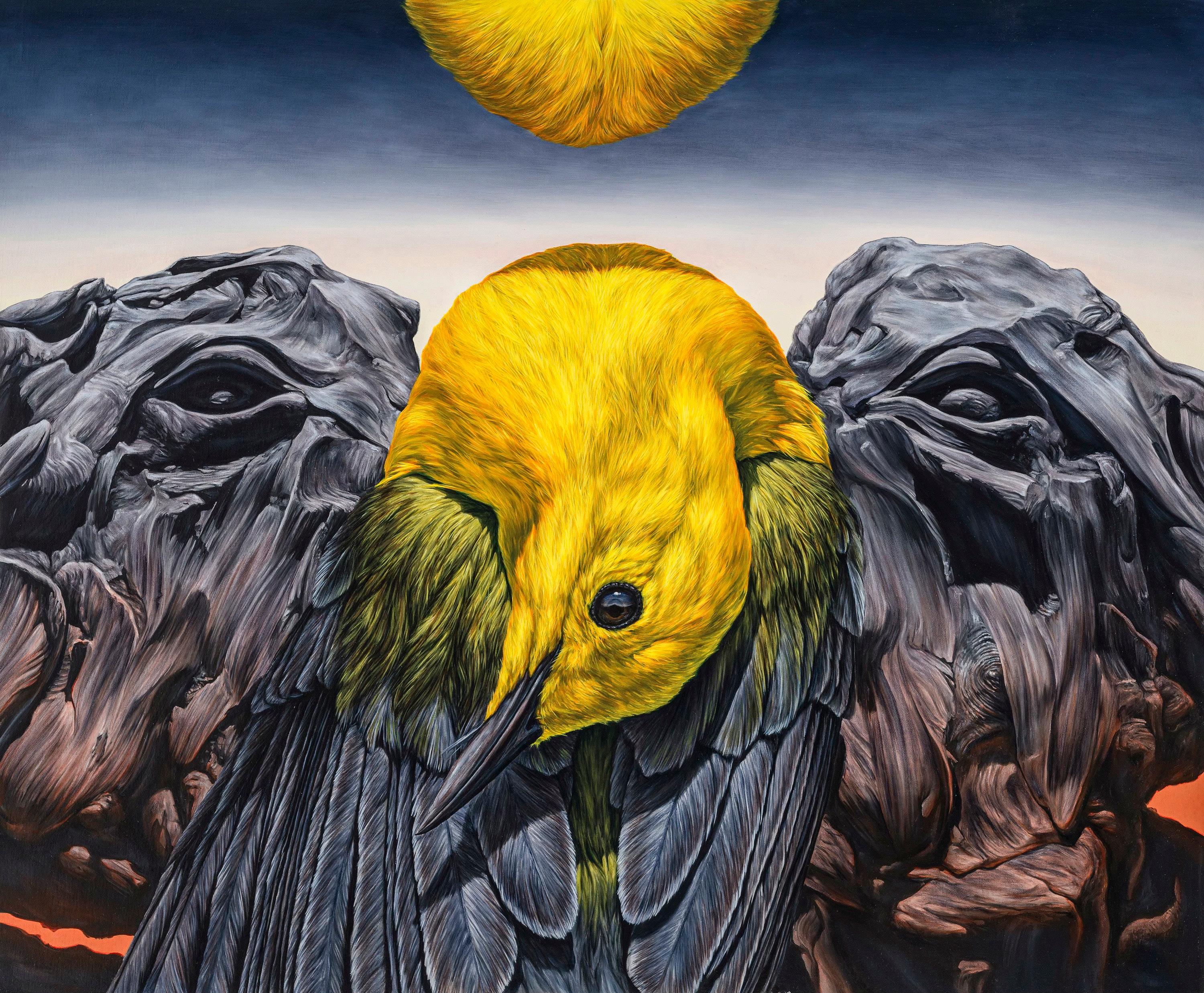
world will be different but there will still be a world and we can shape that future. Part of that future will be an acknowledgment of loss, we will not be able to get back to where we were, it is going to be different. But we can move forward with a spirit of hopefulness and compassion, and not towards a Mad Max dystopian horrible future. I believe that the option exists for us to collectively progress by helping one another.
In your opinion, what roles does the art community play in driving broader awareness and action on sustainability beyond the confines of the art world?
It’s so important to bring these ideas into the public and into schools. The opportunity does exist for an artist to be a voice, an enlightener, to be someone who thinks and approaches things in a different way. A visual
artist can make the unseen visible. I do think that there is a potential role for artists in the climate crisis - as advocates, as communicators, as people to bring light to subjects that are often hard to see.
Thank you very much for taking the time to talk with us!
George Boorujy teaches Foundation painting, Fur, Feather, and Scales, and Anatomy classes at SVA. You can find out more about him and his work at georgeboorujy.com and @georgeboorujy on Instagram. Find more about Artists Commit at artistscommit.com.
These are microscopic images of bio-plastics, they come from a workshop with Joe Degiorgis at the Bio Art class, where we delved into neuroscience and marine biology, introduced to a variety of model microscopes and documented a range of specimens in both still and video formats. Photographs are meant to showcase that biodegradable plastics can be as beautiful as synthetic plastiques, both in the microscopic and life size level.


In the story, a bridge between reality and fantasy nature is built and is powered by the souls of the fanatics who are eagerly seeking to restore the “past.” It is a warning of what people are ignoring in the contemporary world, of the destruction that humans are causing upon living organisms.

The concept of a DIY (Do It Yourself) typeface created by beading is not just a unique artistic endeavor but also a therapeutic activity that resonates deeply in today’s fast-paced and information-saturated society. This form of artistry combines the tactile pleasure of working with beads and the intellectual challenge of typography to create something both visually striking and personally meaningful. Creating a typeface with beads requires patience, precision, and a creative vision. Each letter must be carefully designed to maintain readability while showcasing the unique aesthetic that beads can offer. The process involves selecting beads of various colors, sizes, and shapes to form letters and characters, considering how these elements come together to create a cohesive font. This tactile process offers a form of digital detox, allowing individuals to step away from the constant bombardment of digital information and engage in a mindful, meditative activity. The act of stringing beads and focusing on the creation of each letter forces a slowdown, encouraging a state of flow where time feels like it’s standing still, and the mind’s chatter is silenced. This state of deep immersion and concentration can be incredibly beneficial for mental health, providing a break from the stress and anxiety
that often accompany our digital lives. Moreover, the therapeutic benefits of engaging in such detailed and focused work are well-documented. Activities that require concentration and offer a creative outlet, like beading, have been shown to reduce stress, improve mood, and even decrease symptoms of anxiety and depression. The repetitive nature of beading can be particularly calming, as it creates a rhythm that can help soothe the mind. In addition to the mental health benefits, creating a DIY typeface through beading can also be a form of personal expression and creativity. Each completed piece is a reflection of the creator’s personality, choices, and aesthetic preferences, making it a deeply personal and unique work of art. This approach to creating a typeface not only offers a respite from the digital world but also reconnects individuals with the physicality of crafting by hand, providing a sense of accomplishment and satisfaction that is often missing in digital endeavors.
It’s a reminder of the value of slowing down, focusing deeply on a task, and the joy of creating something with one’s own hands.

What’s happening: The figure goes to take a nap in the inviting and mystical grass nest in the forest. Why: This piece seeks to remind us that we are all related to nature. The calmness of basking in what our natural world graciously provides us is something we should remember and be grateful for.

“The Spectacle Experiment” is an ongoing project that aims to explore themes of solitude, isolation, and vulnerability within landscapes collaboratively shaped by both nature and human intervention.

NEWS makes the rebirth possible for the leftover and the ignored. I picked up the fake cash from the ground during the Spring Festival and grabbed a free newspaper from a dance studio. The random placement of fake cash over a free newspaper serves as another layer of compositional element and a critique to the commercial aspect of the art world. To spare a free newspaper some fake cash for its documentation of how one switches their career into art, as an artist...Intriguing. Then, I scanned and documented the image in an archive and set the materials free for more possibilities.

In our contemporary world, where the air is increasingly polluted, the imperative to tackle environmental sustainability is unmistakably urgent. This piece portrays a taxi driver surrounded, almost engulfed by the repetitive phrase “NOWHERE TO GO,” creating a sense of suffocation. It serves not only to highlight the link between transportation practice and air pollution but also as a commentary on the interplay between human actions, air quality, and the broader concept of sustainability.
The presence of automobiles, including taxis, serves as a stark reminder of the significant contribution of transportation to urban air pollution. From exhaust emissions to traffic congestion, the transportation sector plays a pivotal role in exacerbating air quality issues, posing a threat to both public health and environmental sustainability. In the face of these challenges, this art piece aims to ignite conversations about the critical need for sustainability in our daily lives and inspire collective efforts toward a cleaner, healthier future for generations to come.
Through creativity and awareness, we can pave the way towards a more sustainable world, where every breath we take is proof of our commitment to safeguarding the environment on this shared earth.

The two collages were made with cardboard and handmade papers. It was about the imagination of my inner self’s home and tree. I also doodled on top of it.


Threads of Pollution illustrates the detrimental impact of fast fashion on the environment. Specifically, ocean pollution is depicted. In the industry, due to the enormous demand for clothes, the production pipeline must generate enough supply. Often times, fabric dyes are not properly treated and instead, they are released into the ocean. In Threads of Pollution, this concept is demonstrated with the pink dye flowing into the ocean. The artwork serves as a reminder to implement sustainable practices within the fashion industry to protect the environment.
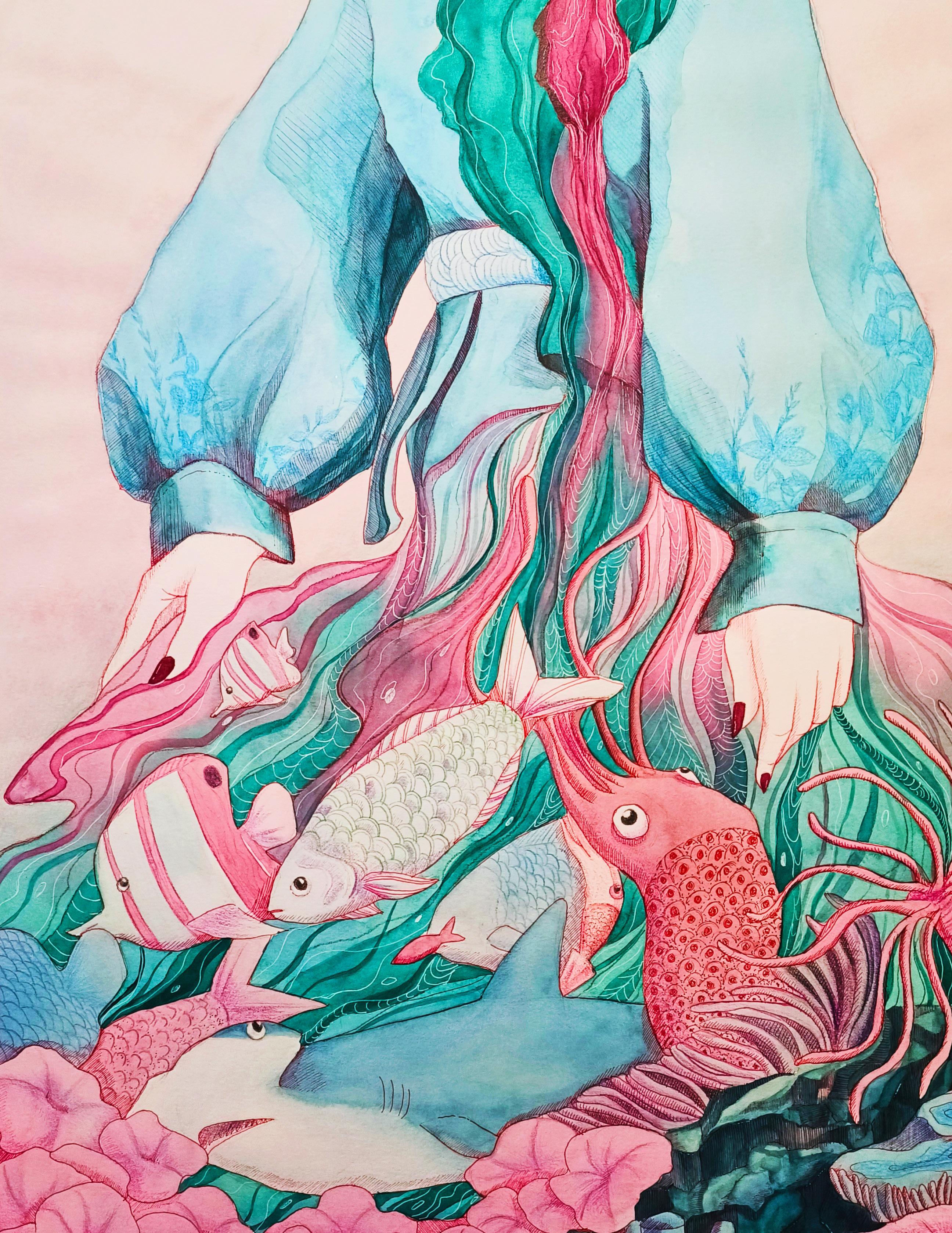
I designed alt, a mobile app that facilitates users in transforming their purchasing habits, offering the cleanest and most cost-effective products while seamlessly integrating sustainable lifestyles into their daily routines. Through our service, we aim to bring people together, fostering connections to propagate the spirit of environmental protection and collectively sharing in the beauty of our Earth.

The depiction of a grotesque, oversized sunfish suspended in the air serves as a poignant symbol of the vulnerability of marine ecosystems and the profound impact of human activities on marine life. Sunfish, known for their passive nature and inability to defend themselves against predators, epitomize the fragility of oceanic creatures. By portraying this inherently delicate creature in a grotesquely exaggerated form within an otherworldly setting, I sought to underscore the critical imperative of safeguarding marine biodiversity and addressing pressing issues such as overfishing and habitat degradation.

Look for paints that are water-based, non-toxic, and free from harmful chemicals. These are not only safer for you, but for the environment as well. Rather than choosing traditional canvases, opt for reclaimed or recycled materials. You can find reclaimed wood or use recycled cardboard, both of which can make for a unique canvas. If your art involves drawing or sketching, go for recycled paper. This Issue was printed on recycled paper! If you work with sculpture, consider using biodegradable materials like clay, beeswax, or plant-based resins.
Old newspapers, bottle caps, broken glass, and even used coffee grounds can be used to create art. Keep an eye out for interesting materials that you can collect and use in your work that don’t have to be purchased new! Even a paintbrush can be replaced to be more sustainable. You could use an old toothbrush, a piece of cardboard, or even your fingers to create interesting textures and effects. Second-hand stores are a great place to gather materials—from old clothes and furniture to books and records. You could swap materials with fellow students. It’s a fun way to get rid of materials you no longer need and discover new ones to work with.
• Never rinse paint brushes or pour leftover paint down the sink to prevent damage and pollution. Instead, wipe off excess paint and dispose of it in general waste.
• Recycle non-toxic acrylic paint at a waste facility by saving leftovers in a container for later recycling.
• Soak multiple brushes or tools in water to remove acrylic paint, then dispose of the dried paint properly.
• Use only necessary amounts of paint to reduce leftovers, saving money and protecting the environment.
• Use cat litter to absorb paint water before disposal to prevent drain contamination.
• Reuse leftover paint by covering palettes and storing them properly to extend their lifespan.
• Rinse tools with a spray bottle to prevent wastewater runoff and dispose of it properly.
• Empty and dry acrylic paint containers before disposal to avoid environmental harm.
• Check paint packaging for recyclability and wipe down before recycling.
• Explore new uses for leftover paint before discarding to spark creativity and minimize waste.
For artists, light stands out as a crucial element in the creative journey. You can enhance the eco-friendliness of your artistic practice by utilizing natural light. Opting for natural light over artificial sources can notably diminish your energy usage. This means fewer lights switched on and less electricity consumed, resulting in a reduced carbon footprint. Utilizing sunny days for your eco-conscious artwork not only saves on energy costs but also supports a healthier environment. Natural light isn’t just about illumination; it can positively impact your mood and productivity. Sunlight has the potential to invigorate you and enhance your concentration, fostering a more seamless creative process. Embracing sunlight can unleash your creativity and elevate your artistic output. Natural light is able to reveal the genuine colors and textures of your artwork. It enables a more accurate depiction during the creation process and renders a final product that’s true to its essence. By switching off studio lights and welcoming in natural illumination, you’re not only conserving energy and shrinking your carbon footprint but also basking in the enriching warmth and vibrancy of sunlight. Embrace natural light and let your eco-friendly creations radiate!
Art is a tool for communication. As an artist, you have a unique platform to promote sustainability. To integrate sustainable practices into your art: Stay updated on eco-friendly art trends through books, blogs, and workshops. Spread insights on sustainable art through social media, shows, or artwork. Consider leading classes or workshops to inspire eco-conscious art practices. Let’s build a more sustainable art world by learning, teaching, and sharing.
Collaborating with like-minded artists on eco-friendly artwork amplifies the message of sustainability. Partner with another artist to create eco-friendly artwork, sharing techniques and expanding your audience. Join or form a collective dedicated to sustainable art for support, resources, and community.Engage in exchanges using sustainable materials to inspire and promote eco-friendly artwork. Together, we can make a real impact promoting the importance of eco-friendly art!






